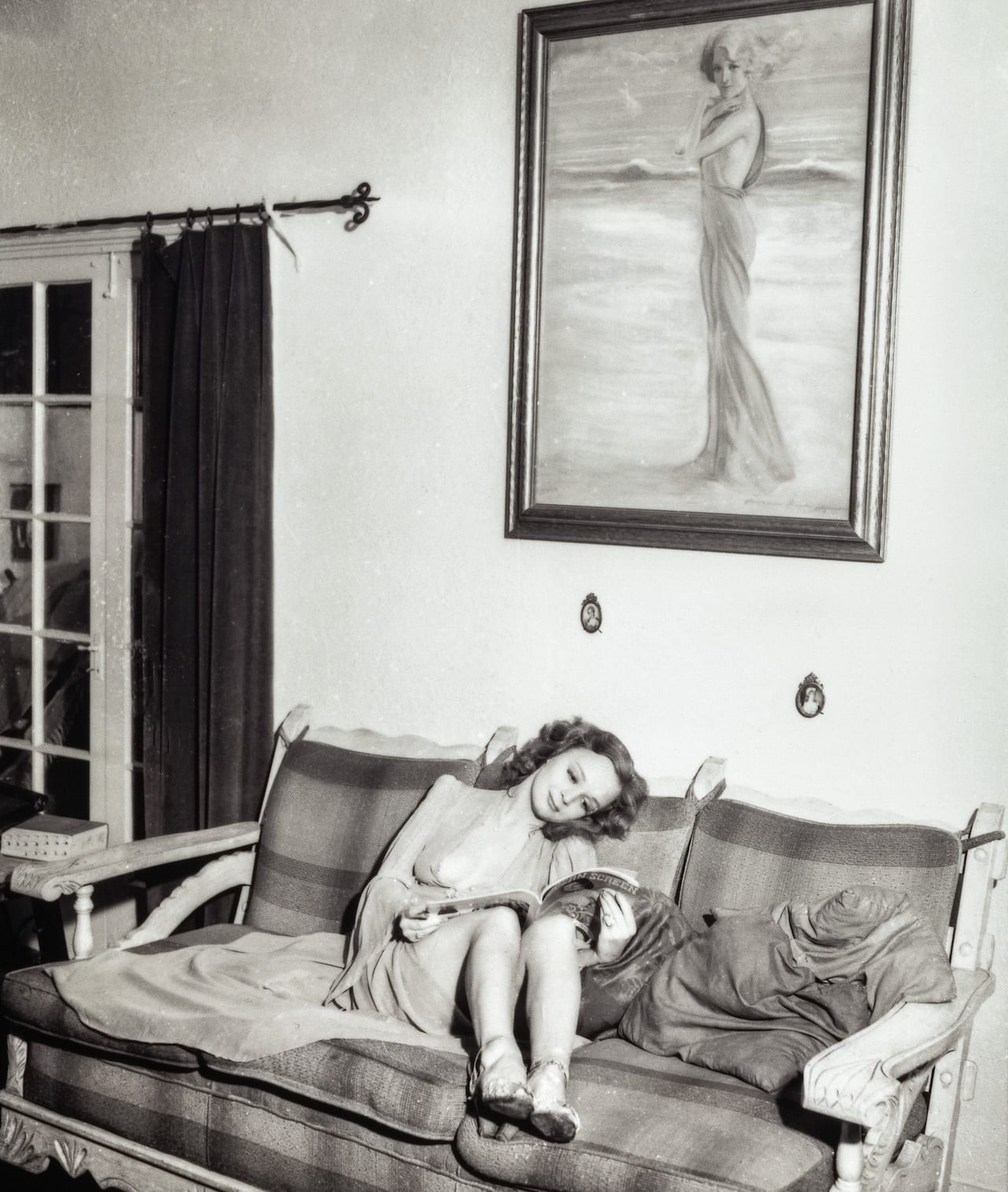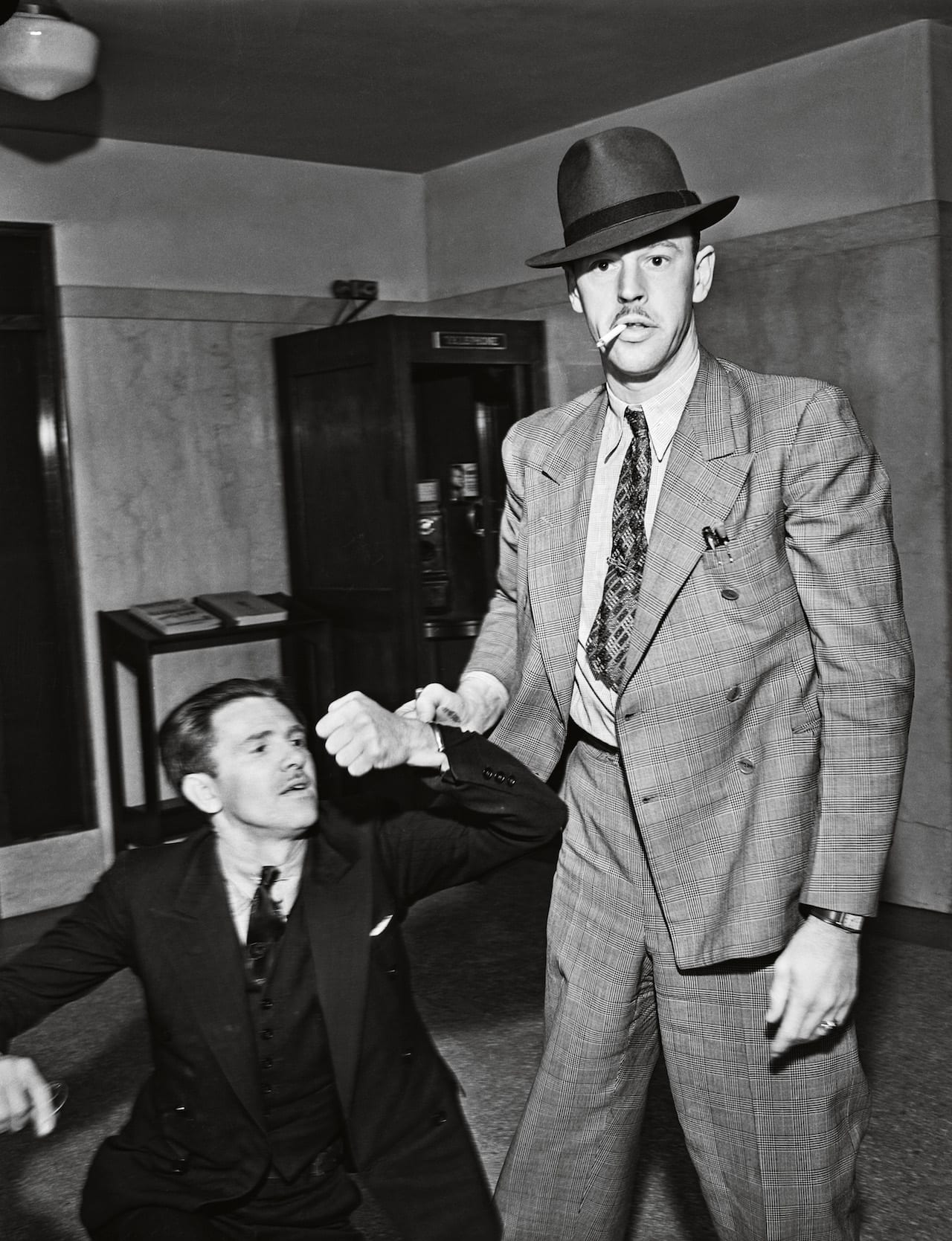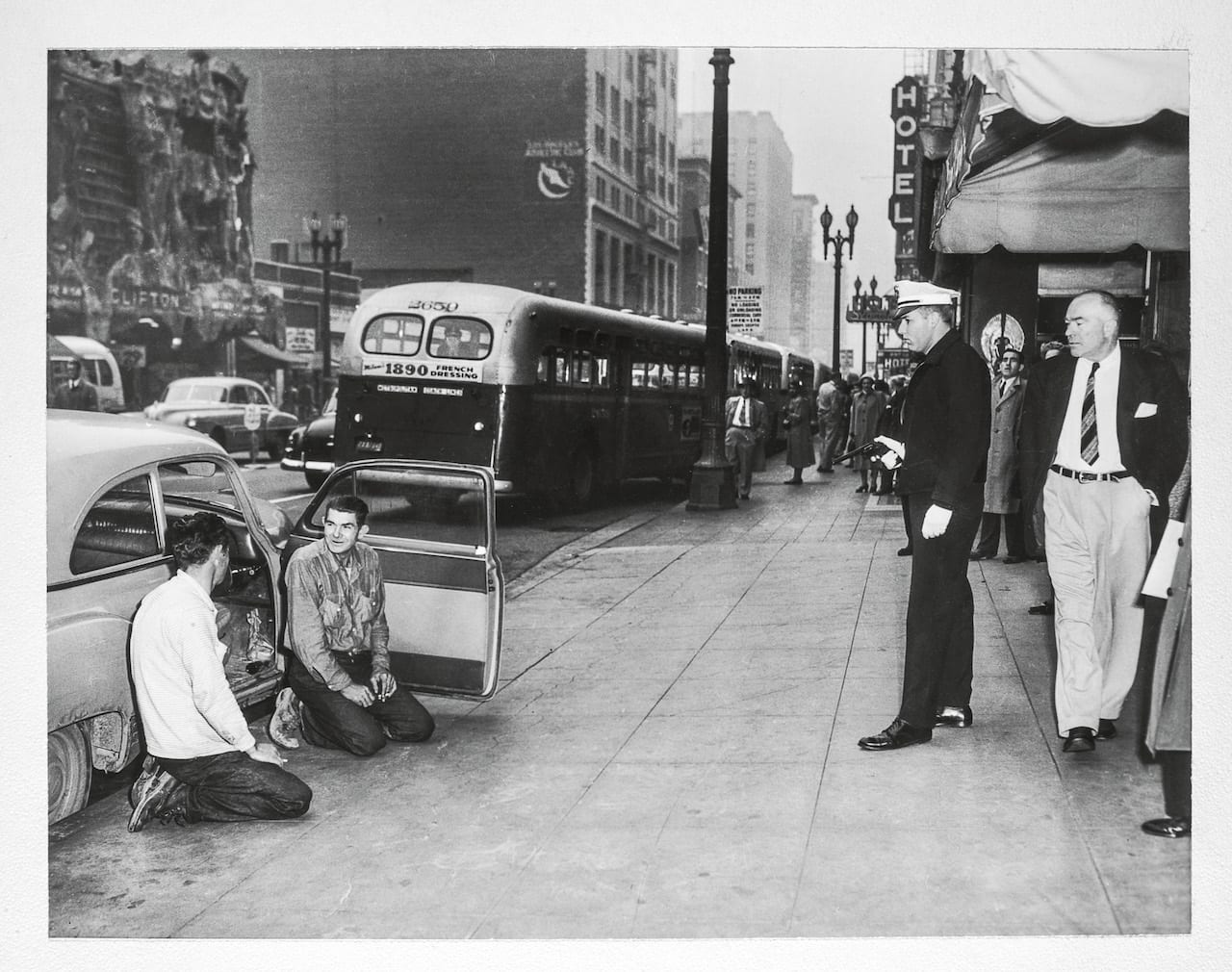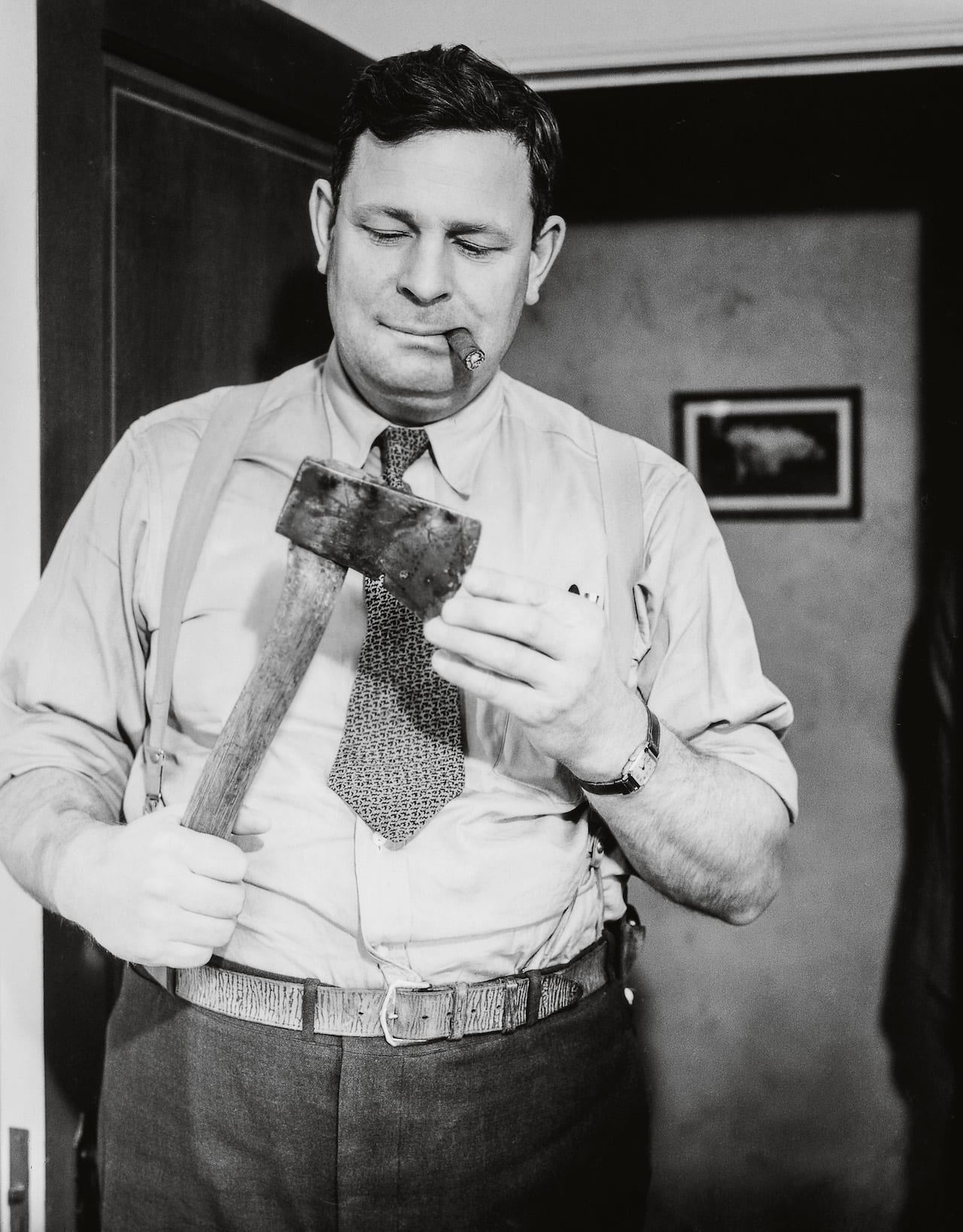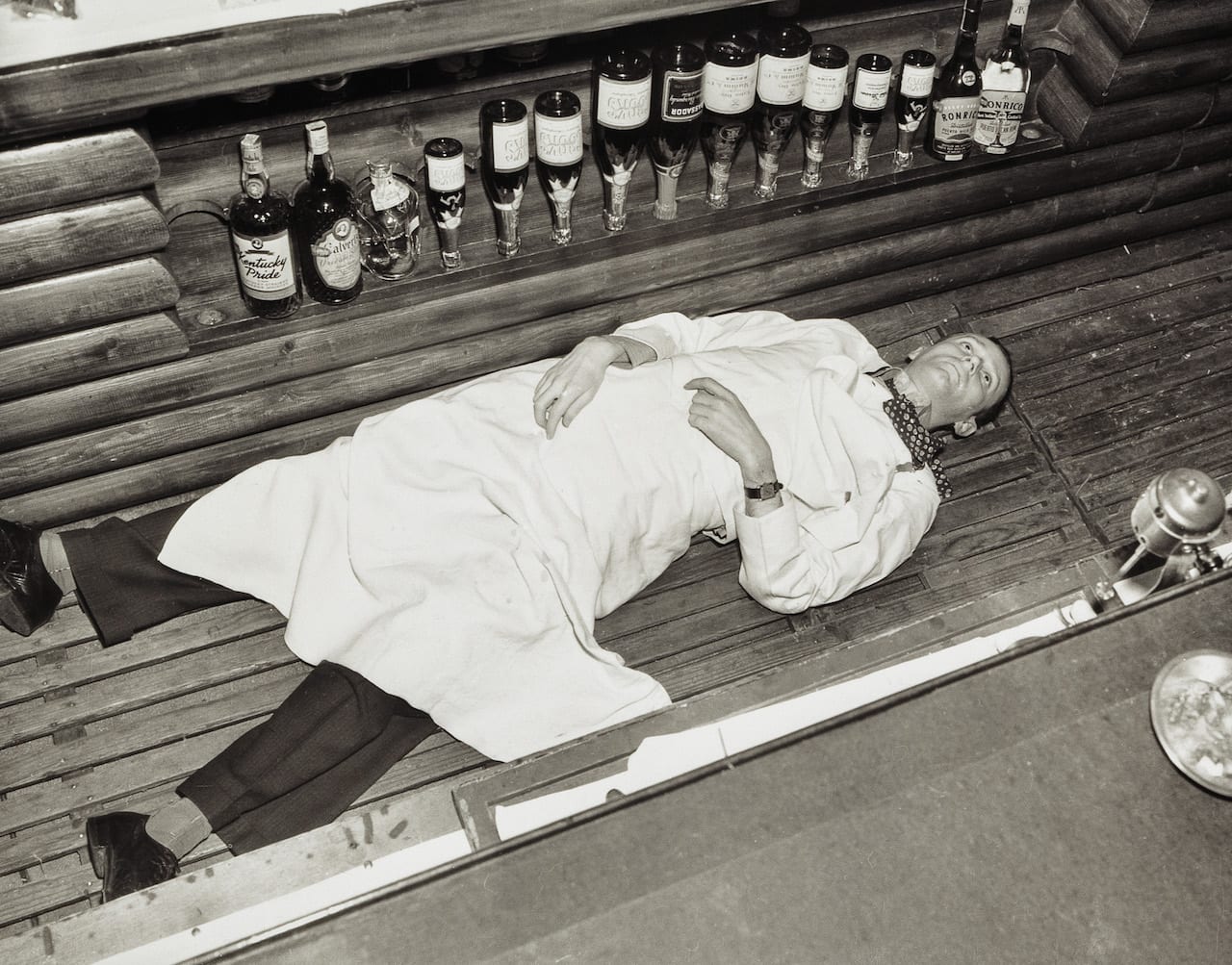“The streets were dark with something more than night,” wrote Raymond Chandler in The Simple Art of Murder (1950). Born in Chicago but brought up in Los Angeles, Chandler helped create the genre that became synonymous with the City of Angels – the grimy, morally ambiguous Noir.
And, suggests a new book by Taschen’s executive editor Jim Heimann, there’s good reason why LA gave birth to Noir. A small (though already shady) city until 1892, it was transformed when oil was discovered in modern day Echo Park. The black gold brought in money, and with it corruption, and a series of lurid real-life crimes. At the same time, Hollywood and the burgeoning newspaper industry helped ensure a plentiful supply of photographers, documenting both the good and the bad to be found.
“Promotional imagery of mountains, sun and surf promised a better life and unlimited possibilities, but newspaper and tabloid photos showed newcomers that the seductive vision wasn’t the whole story,” wrote Heimann in LA Weekly recently. “The flip side of paradise was a different Southland, one where dope rings, petty criminals, sensational murders, ladies of the night, bullet-riddled bodies and a notoriously corrupt police force flourished.
“It was the other Los Angeles — a city awash in corruption and sin. The posed and the candid. The good and the bad. A city to aspire to and a city to revile. Both versions were responsible for creating the mythic City of Angels. The photos and stories told of a town on the backslide, documented in black and white, and furnishing the reality behind the writers’ fiction.”
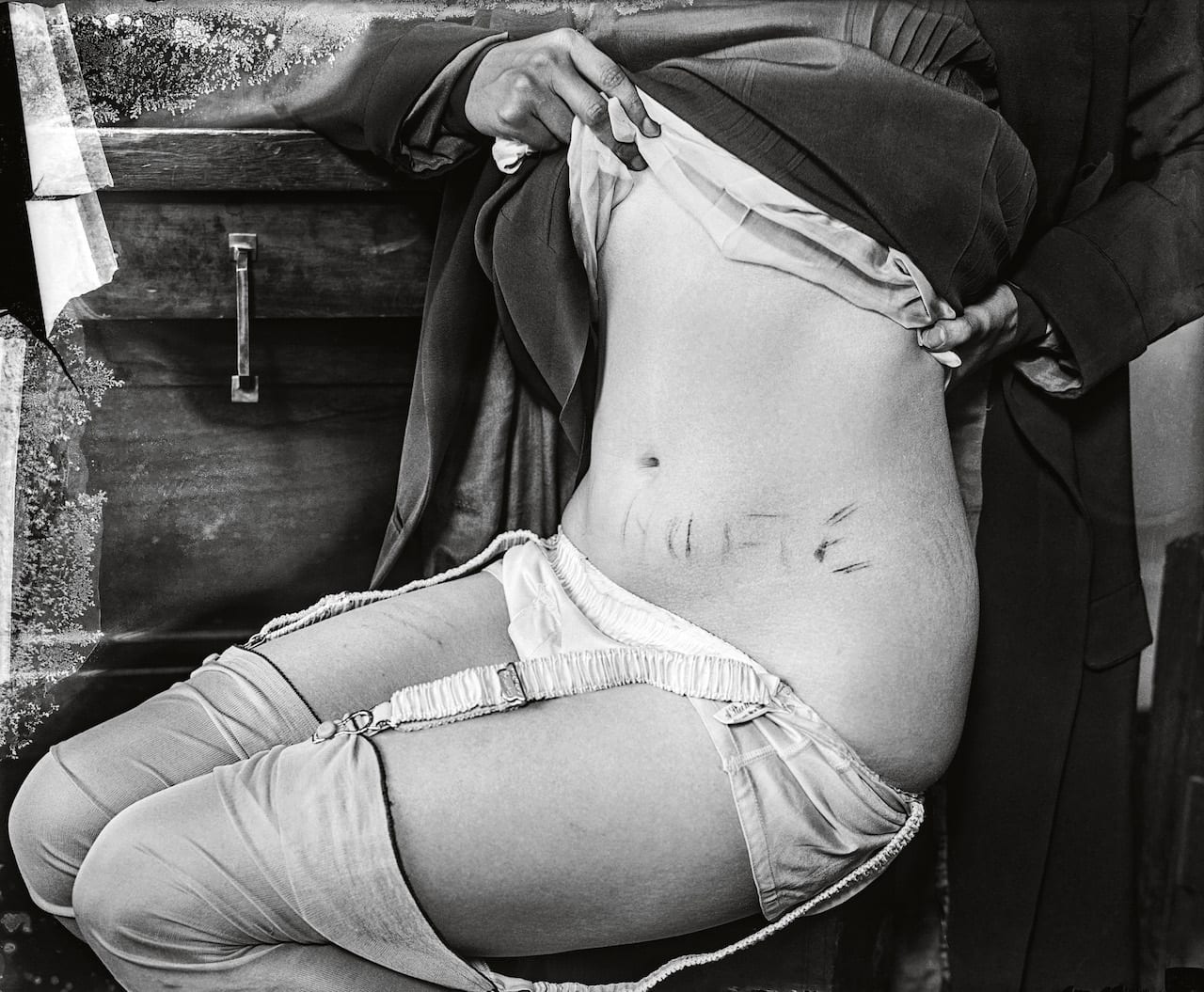
Heimann has been collecting these lurid images for years, sifting through archives held privately, and by museums, newspapers and the police. His book, Dark City: The Real Los Angeles Noir, traces a journey from the 1920s to 1950s, delving into nightclubs, gambling dens and back alleys, and showing LA’s seamy underbelly.
480 pages long and including bound-in facsimiles of magazine clippings, the book shows images of some shocking misdeeds and crimes. In one image the victim of a sex attack lifts her clothing, showing the personalised message carved on her skin by her abuser; in another, a cop and curious passersby stare through a window riven with bullet holes. “Photographers back then were given much more freedom in terms of access onto crime scenes,” notes Heimann.
For Heimann one of the most surprising discoveries was the religious sects and cults that flourished in LA – notably the I AM cult. “LA is full of drifters, people looking to reinvent their lives, so they’re very susceptible to these kinds of things,” he says; after years of looking he stumbled across a postcard of an I AM church, and the excitement spurred him on to find more.
In fact Heimann is an avid collector, and he’s published many other titles over the years, including Taschen’s Surfing, Los Angeles. Portrait of a City and the best-selling All American Ads series. But he’s been working on Dark City for years, and says that it’s now an ongoing obsession – at least until he runs out of storage.
Dark City: The Real Los Angeles Noir is published by Taschen, priced £75 www.taschen.com
